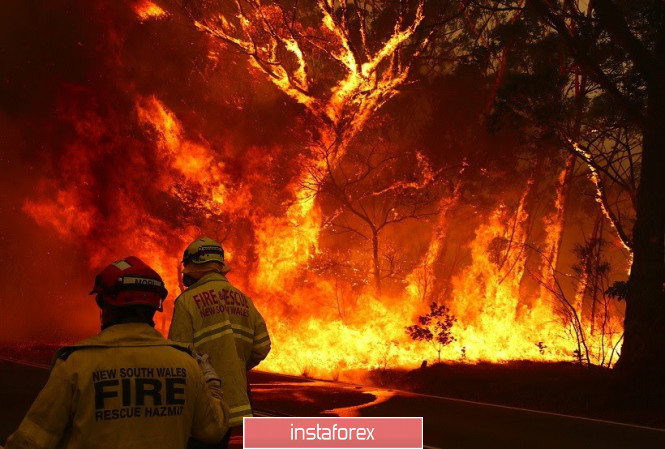The Australian dollar paired with the US currency reached 5-month highs at the end of December, for the first time since July, exceeding the key resistance level of 0.7000. However, the aussie could not resist in the region of the 70th figure, and the pair returned to their previous positions in January, settling in the region of the 68th figure. Such dynamics are caused, first of all, by the general strengthening of the US dollar, while the Australian currency cannot stand alone against dollar bulls. The ambiguous situation on the Australian labor market, large-scale fires and signs of a political crisis put pressure on the aussie. Therefore, if US Nonfarms come out in the green zone tomorrow, then the AUD/USD pair may well fall below the lower boundary of the Kumo cloud (on the daily chart), that is, under the mark of 0.6800.

Judging by yesterday's report from ADP, the US labor market may again support the US dollar. According to unofficial data, in December more than 200 thousand (202) jobs were created in the private sector. According to forecasts, official data will be released at the level of 150 thousand, which is also a pretty good result. But the Australian labor market continues to show contradictory dynamics. And here it is worth recalling that the Reserve Bank of Australia during its last meetings focused on the dynamics of the labor market growth. While the latest published data in this area (the release was on December 19) are negative, despite the green color. The unemployment rate is slightly higher than the forecasted level (5.2%). Unemployment was at five percent at the beginning of last year, it then dropped to 4.9% in February, but then stabilized in the region of 5.2-5.3%. This is quite far from the RBA target level of 4.5%.
Most experts assumed that the indicator will remain at around 5.3% in December, but in reality the indicator has retreated to its previous position of 5.2% (at this level it went from April to July, as well as in September). Therefore, if we consider the situation throughout the year, then we can't talk about a decrease in unemployment, especially in the context of achieving the target level of RBA.
Even more questions are raised by the increase in the number of employees. It also entered the green zone in December. Following a significant decrease in October (-24 thousand) and rather weak forecasts for November (+14.5 thousand), the indicator showed a good, at first glance, result: +39.9 thousand. But considering the structure of this indicator, we can conclude that the situation does not look completely positive. The fact is that the positive dynamics of the growth of employed was only due to the growth of part-time employment - this component grew by 35.7 thousand. But full employment, on the contrary, showed extremely weak dynamics, having understood only four thousand. This trend may negatively affect the dynamics of wage growth, as regular positions, as a rule, offer a higher level of wages and a higher level of social security.
It is worth noting that the first RBA meeting in 2020 will take place only on February 4, and up to this date more recent data on the labor market will be published. But at the moment, traders are guided by the December numbers, which leave much to be desired. This fact puts background pressure on the Australian, who in the AUD/USD pair is forced to focus on the behavior of the US currency.
Natural disasters also put downward pressure on the aussie. According to recent data, the economic damage from forest fires devastating the eastern coast of the continent will exceed a record $4.4 billion. According to analysts at Moody's Analytics, fires will undermine Australia's already weak consumer confidence and also damage the economy due to significant air pollution (direct damage is done to industries such as agriculture and tourism). The country suffered similar damage ten years ago, during the major forest fires of 2009, called the "Black Saturday fires"....

Thus, the Australian dollar paired with the US currency now has all the prerequisites for its decline - primarily due to the growth of the US dollar. The aussie does not have significant arguments for its own strengthening, so it is forced to stay in the wake of the quoted currency in the AUD/USD pair. Therefore, tomorrow's Nonfarm data can have a strong impact on the aussie's dynamics - especially if the real numbers will significantly differ from the forecast values.
From a technical point of view, the pair is between the middle and lower lines of the Bollinger Bands indicator on the daily chart. In addition, the Ichimoku indicator generated the Dead Cross signal, in which the Tenkan-sen and Kijun-sen lines are above the price, and the Kumo cloud is below it. All this suggests that the pair has the potential to decrease, up to the lower boundary of the above cloud, that is, to around 0.6800. If the price movement is impulsive, the pair may break through this level of support, gaining a foothold in the region of the 67th figure.
The material has been provided by InstaForex Company - www.instaforex.com